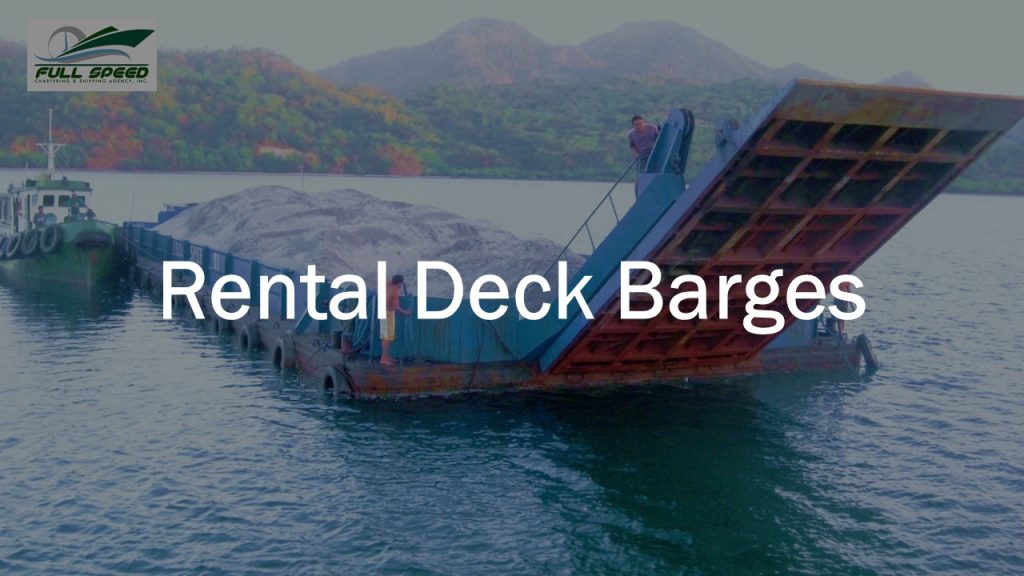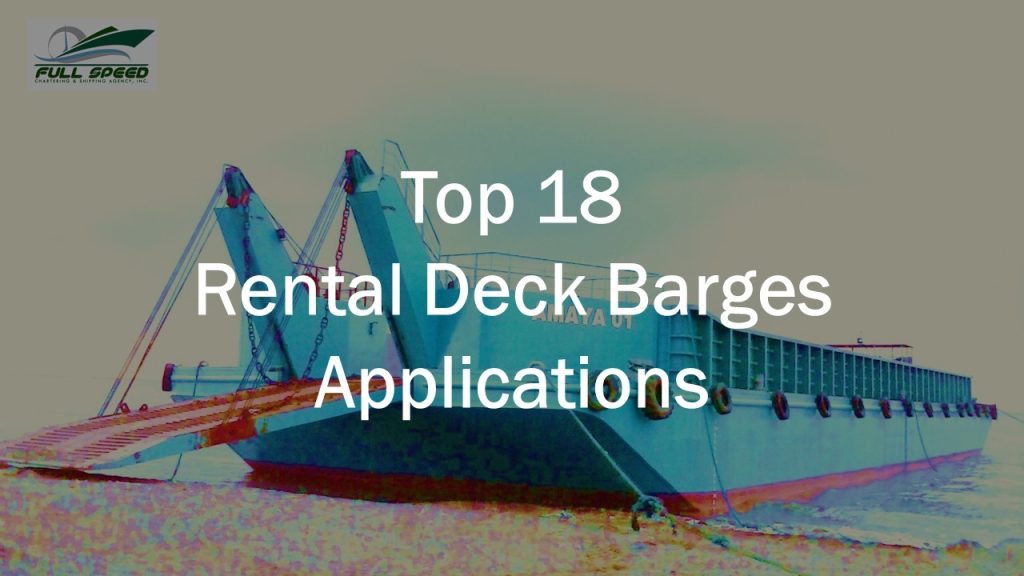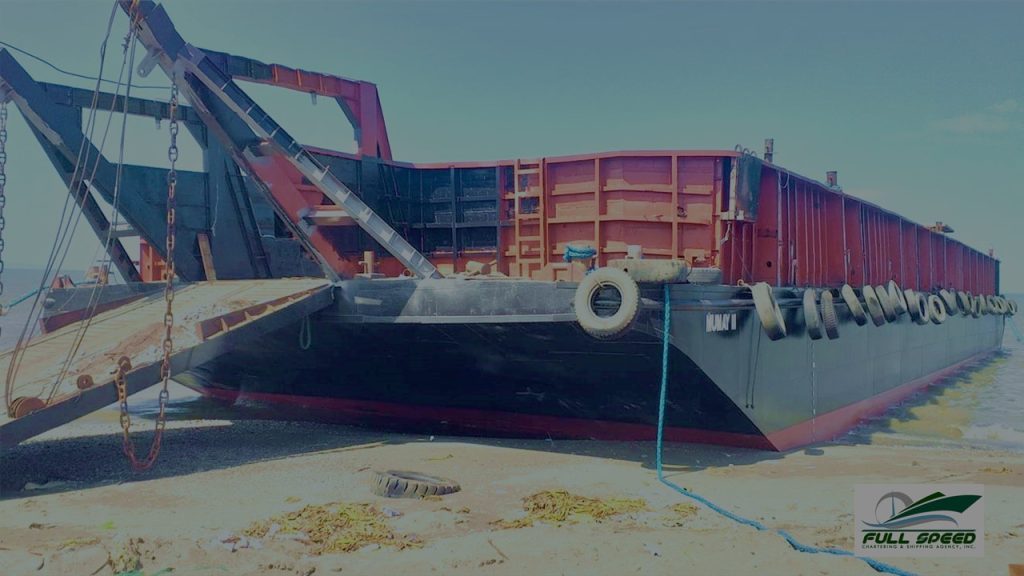In a country scattered with over 7,000 islands, the Philippines faces unique challenges when it comes to transporting heavy equipment across its diverse terrain. With highways often congested and mountainous regions presenting obstacles for traditional transportation methods, the need for an alternative solution has become increasingly evident. Enter barges – massive vessels that have revolutionized heavy equipment transport in this archipelagic nation. Offering an efficient and cost-effective means of moving large machinery between islands and navigating narrow waterways, barges have emerged as the go-to choice for businesses and industries seeking to overcome the logistical hurdles of transporting heavy equipment in the Philippines. In this article, we delve into the world of barges, exploring their advantages, applications, and impact on industries vital to national development.
Click here to view our barges for heavy equipment transport in the Philippines.
Why Barges are a Popular Choice for Heavy Equipment Transport in the Philippines
Barges have become a popular choice for heavy equipment transport in the Philippines due to their many advantageous features. One of the key factors driving this trend is the country’s vast network of rivers and waterways that provide convenient access to various regions, even those that are difficult to reach by road. Barges can navigate these routes with ease, making them a reliable and efficient option for transporting heavy equipment.
Furthermore, barges offer an economical solution for heavy equipment transport. Compared to traditional modes of transportation such as trucks or trains, barges have lower fuel costs and require fewer personnel to operate. They also have larger capacities, allowing them to carry multiple heavy pieces of machinery in one trip. This not only reduces transportation expenses but also minimizes carbon emissions associated with multiple trips by smaller vehicles.
Another compelling aspect of using barges for heavy equipment transport is their versatility. These vessels can be customized according to specific cargo requirements, ensuring safe and secure transportation of various types of machinery. They can be equipped with ramps or cranes for easy loading and unloading, as well as special fixtures like reinforced decks or tie-down points to securely hold the equipment in place during transit.
Barges have emerged as a popular choice for heavy equipment transport in the Philippines due to their ability to navigate waterways efficiently, cost-effectiveness compared to other modes of transport, and customizable features that ensure the safe delivery of valuable machinery.
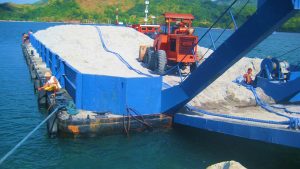
Different Types of Heavy Equipment that Can Fit in Barges
Barges have long been a reliable means of transporting heavy equipment, thanks to their large open decks and high load capacity. But what types of heavy equipment can actually fit in barges? Well, the possibilities are vast. One common type is cranes, which come in various sizes and configurations. These machines can be disassembled into smaller components and easily loaded onto barges for transport. Excavators are another popular option; their size and weight make them suitable for barge transportation with relative ease.
Another heavy piece of machinery that fits well on barges is the bulldozer. With its sturdy construction and compact design, it can be safely transported by barge where other options might struggle. Forklifts are also a great choice when considering equipment that can fit in barges. With their ability to navigate tight spaces and maneuverability at low speeds, they are easily loaded onto barges for transport.
One surprising heavy equipment option that is often overlooked is the mobile concrete mixer or volumetric mixer truck. These trucks offer flexibility in onsite concrete production and transportation as they mix fresh concrete on-site rather than hauling pre-mixed concrete batches like traditional trucks. The compact size of these mixers makes them perfect for fitting onto barges while still allowing room for other necessary equipment.
There are a range of different types of heavy equipment that can comfortably fit on barges while providing efficient transportation solutions across bodies of water.
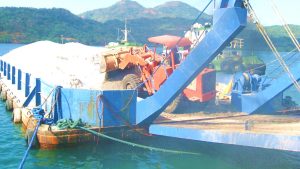
Types of Barges Used for Heavy Equipment Transport in the Philippines
In the Philippines, heavy equipment transport is a crucial part of various industries such as construction, mining, and manufacturing. To efficiently move large and heavy machinery across bodies of water, barges are commonly used. These robust vessels are specifically designed to carry heavy-weight loads and provide a reliable means of transport.
One type of barge commonly used for heavy equipment transport in the Philippines is the deck barge. With its spacious flat surface deck, this type of barge offers ample space to securely load and transport large machinery like cranes and excavators. Equipped with sturdy ramps or gangways for easy access, deck barges ensure that loading and unloading processes are smooth and efficient.
Another popular option for transporting heavy equipment is the spud barge. What sets this type of barge apart is its ability to be anchored in place using hydraulic or mechanical jacks known as spuds. This feature makes it ideal for working in areas with strong currents or limited maneuverability. Spud barges offer stability during loading and unloading processes, which ensures safe transportation even under challenging conditions.
One option for heavy equipment transport in the Philippines is landing craft transports (LCTs). LCTs are specifically designed for transporting heavy equipment and vehicles, with a large open deck space that allows for easy loading and unloading. These vessels have ramps at the front or rear, making it convenient to drive vehicles or equipment directly onto the deck.
These different types of barges play a vital role in facilitating heavy equipment transportation in the Philippines. By utilizing their unique design features like ample deck space or anchoring capabilities, they provide safe and efficient solutions to meet the demands of various industries. Whether it’s constructing new infrastructure or mining operations on remote islands, these versatile barges contribute significantly to driving economic growth across the country.
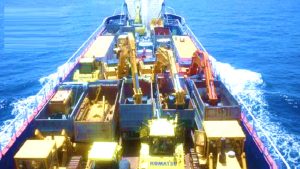
Benefits of Using Barges for Heavy Equipment Transportation
The use of barges for heavy equipment transportation is a cost-effective and efficient alternative to traditional methods. Barges have the capacity to carry large and heavy loads, making them ideal for transporting oversize machinery or construction equipment. Unlike trucks or trains, barges can access hard-to-reach locations that are not easily accessible by road or rail.
One major benefit of using barges for heavy equipment transport is reduced wear and tear on roads and bridges. Heavy machinery can cause damage to infrastructure when transported by road, leading to costly repairs and inconvenience for other road users. By opting for barges, the weight of the equipment is evenly distributed over a larger surface area, minimizing the impact on roads and bridges.
Furthermore, using barges can help alleviate traffic congestion caused by oversized loads being transported through busy streets or highways. Barge transportation offers significant relief as it eliminates the need for large convoys of trucks carrying heavy equipment. This not only reduces traffic congestion but also lowers fuel consumption and decreases greenhouse gas emissions.
In conclusion, employing barges for heavy equipment transportation provides numerous advantages that go beyond mere practicality and efficiency. By reducing infrastructure damage, easing traffic congestion, and mitigating environmental impact, this mode of transport proves itself as a sustainable choice in today’s world where sustainability plays a crucial role in all industries.
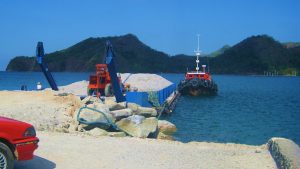
Considerations When Using Barges for Heavy Equipment Transport in the Philippines
When it comes to heavy equipment transport in the Philippines, barges have become increasingly popular due to their ability to efficiently move large machinery and construction equipment. However, there are several considerations that need to be taken into account when opting for this mode of transportation.
Firstly, it is essential to ensure that the barge being used is capable of handling the weight and size of the equipment being transported. This includes not only the weight of the machinery itself but also any additional accessories or attachments that may be attached. Additionally, proper securing and fastening techniques should be employed to prevent any damage or shifting during transit.
Secondly, local regulations and permits must be carefully reviewed before transporting heavy equipment via barge. It is necessary to comply with all legal requirements and obtain necessary authorizations from relevant authorities. Failure to do so may result in delays or even fines, causing unnecessary stress and financial burden.
Lastly, weather conditions should always be taken into consideration when planning a barge transport for heavy equipment. The Philippines experiences various weather patterns throughout the year, including typhoons and monsoon seasons. These weather conditions can severely impact safe navigation on waterways and pose risks for both crew members aboard the barge as well as the cargo being transported.
By considering these factors when using barges for heavy equipment transport in the Philippines, individuals can ensure a smooth and successful transportation experience. Attention must be given not only to technical aspects such as weight capacities but also to the legalities surrounding permits while keeping an eye on unpredictable weather patterns.
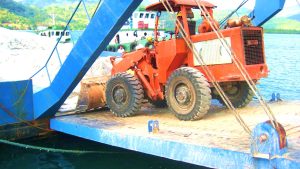
Future Prospects and Developments of Heavy Equipment Transport Using Barges in the Philippines
The future prospects and developments of heavy equipment transport using barges in the Philippines are filled with immense potential. With the country’s growing construction industry and infrastructure projects, there is an increasing demand for efficient transportation of heavy equipment to various locations across the archipelago. Barges provide a viable solution as they can carry large loads and navigate through both sea and river routes, reaching remote areas that are inaccessible by road.
One key development in this sector is the use of advanced technology to enhance barge operations. Integration of GPS tracking systems allows for real-time monitoring and optimization of routes, resulting in improved efficiency and reduced costs. Additionally, the utilization of automated loading and unloading systems further streamlines the process, minimizing human error and speeding up operations.
In recent years, there has also been a focus on environmental sustainability in heavy equipment transport using barges. As concerns about carbon emissions grow, companies have started implementing eco-friendly practices such as utilizing low-emission fuel or even exploring alternative energy sources like solar power. These initiatives not only benefit the environment but also position businesses as responsible contributors towards sustainable development.
With technological advancements and a commitment towards environmental consciousness driving innovation in heavy equipment transport using barges, the future outlook for this sector is promising in the Philippines. As more projects come into fruition nationwide, we can expect further developments in terms of efficiency, cost-effectiveness, and environmentally friendly practices – making barge transport an integral part of the country’s growing infrastructure landscape.
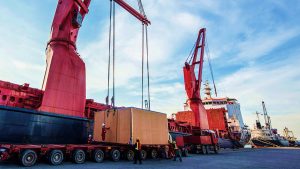
Are You Looking for Barges for Your Heavy Equipment Transportation in the Philippines?
When it comes to heavy equipment transportation, finding the right barges can make all the difference. Full Speed Chartering and Shipping Agency Inc. (FSCSAI) is your go-to solution for all your barge needs in the Philippines. With their years of experience and dedication to customer satisfaction, they provide top-notch services that ensure smooth and efficient transportation of heavy equipment.
- Email us: info@fullspeedchartering.com
- Mobile, Viber, WhatsApp: +63 939 3753224
- Facebook Messenger: Click here
- Click here to inquire
One of the key advantages of choosing FSCSAI for barge services is their well-maintained fleet of barges designed specifically for heavy equipment transport. These state-of-the-art barges are equipped with reliable engines and sturdy decks that can accommodate even the heaviest loads. Moreover, FSCSAI ensures regular maintenance and inspections to guarantee safe and secure transportation every time.
Furthermore, FSCSAI understands that time is crucial when it comes to transporting heavy equipment. Their team of highly skilled professionals is committed to delivering your cargo on time, regardless of any challenges or constraints that may arise during transit. With their expertise in navigating through Philippine waterways, you can trust them to handle your heavy equipment with utmost care and efficiency.
So if you’re looking for a reliable provider of barge services in the Philippines, look no further than Full Speed Chartering and Shipping Agency Inc. With their well-maintained fleet, dedicated team, and commitment to timely delivery, they are your perfect partner for all your heavy equipment transportation needs.

Summing Up: Barges for Heavy Equipment Transport in the Philippines
In conclusion, the use of barges for heavy equipment transport in the Philippines presents a viable solution to address the logistical challenges faced by many industries. With its extensive coastline and numerous navigable waterways, the country has a natural advantage in leveraging barges for transporting heavy machinery. This mode of transportation not only offers greater efficiency and cost savings but also minimizes road congestion and reduces carbon emissions.
Furthermore, with advancements in technology and infrastructure, barging operations have become even more streamlined and reliable. The use of GPS tracking systems allows for real-time monitoring of cargo, ensuring timely delivery and enhancing safety measures. Moreover, specialized barge companies equipped with state-of-the-art cranes and lifting equipment can handle even the heaviest machinery with ease.
By embracing the potential of barges for heavy equipment transport, both large corporations and small businesses can reap considerable benefits while contributing to sustainable development. The Philippines’ strategic location coupled with its commitment to modernizing maritime infrastructure positions it as an ideal hub for such operations. As industries continue to expand their operations across islands or undertake major construction projects, utilizing barges can help overcome logistical hurdles efficiently while minimizing environmental impacts.

